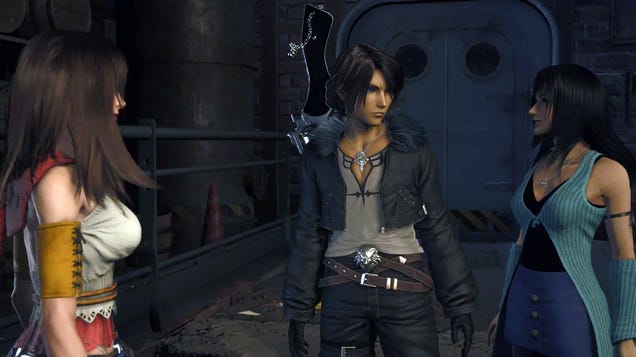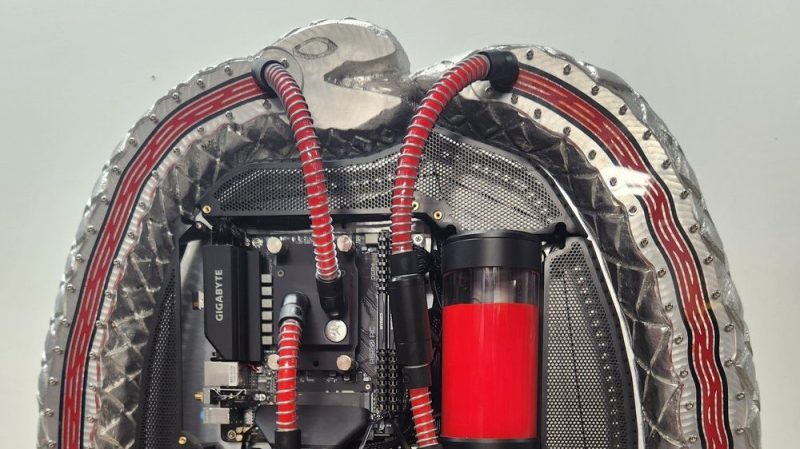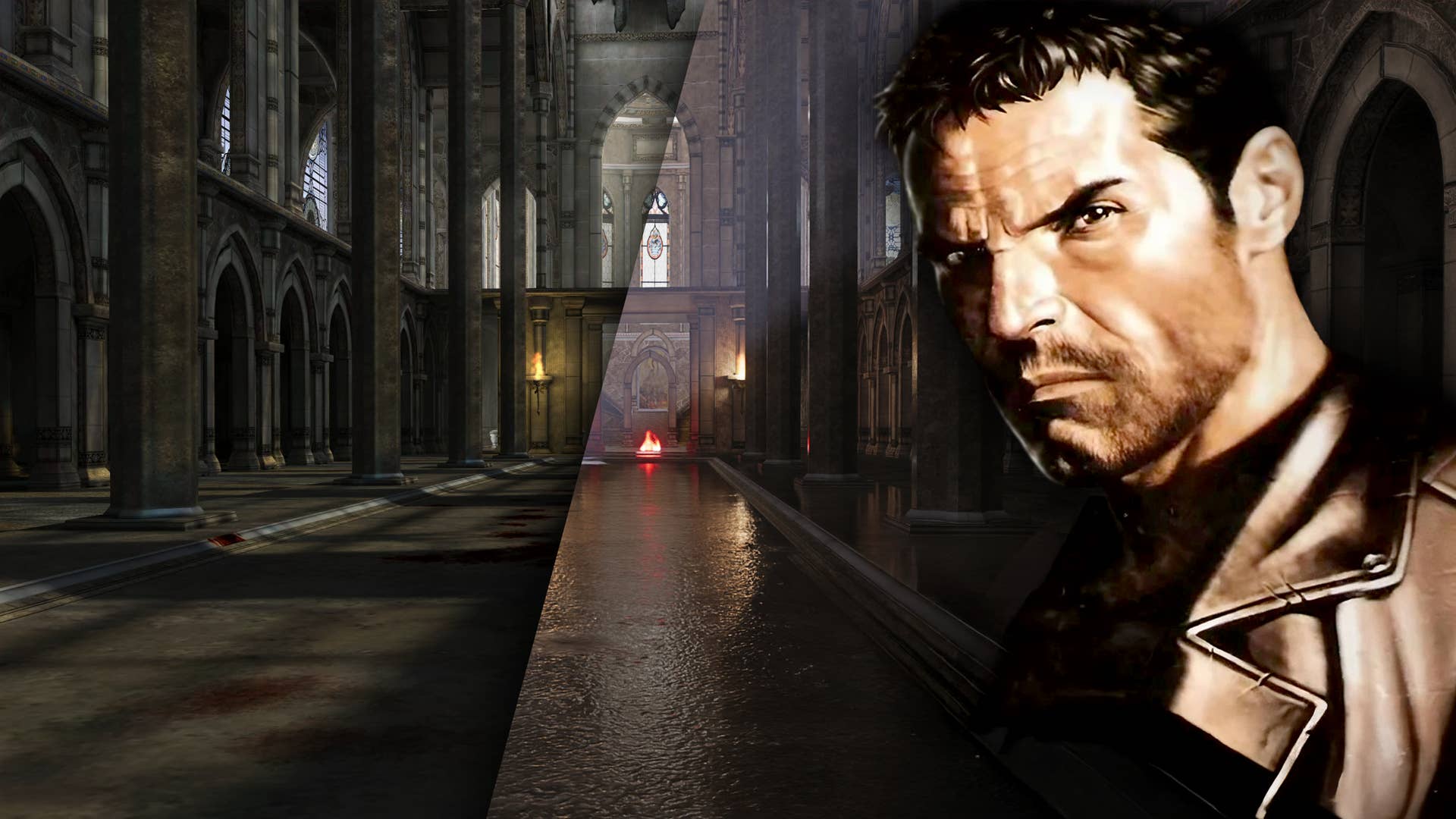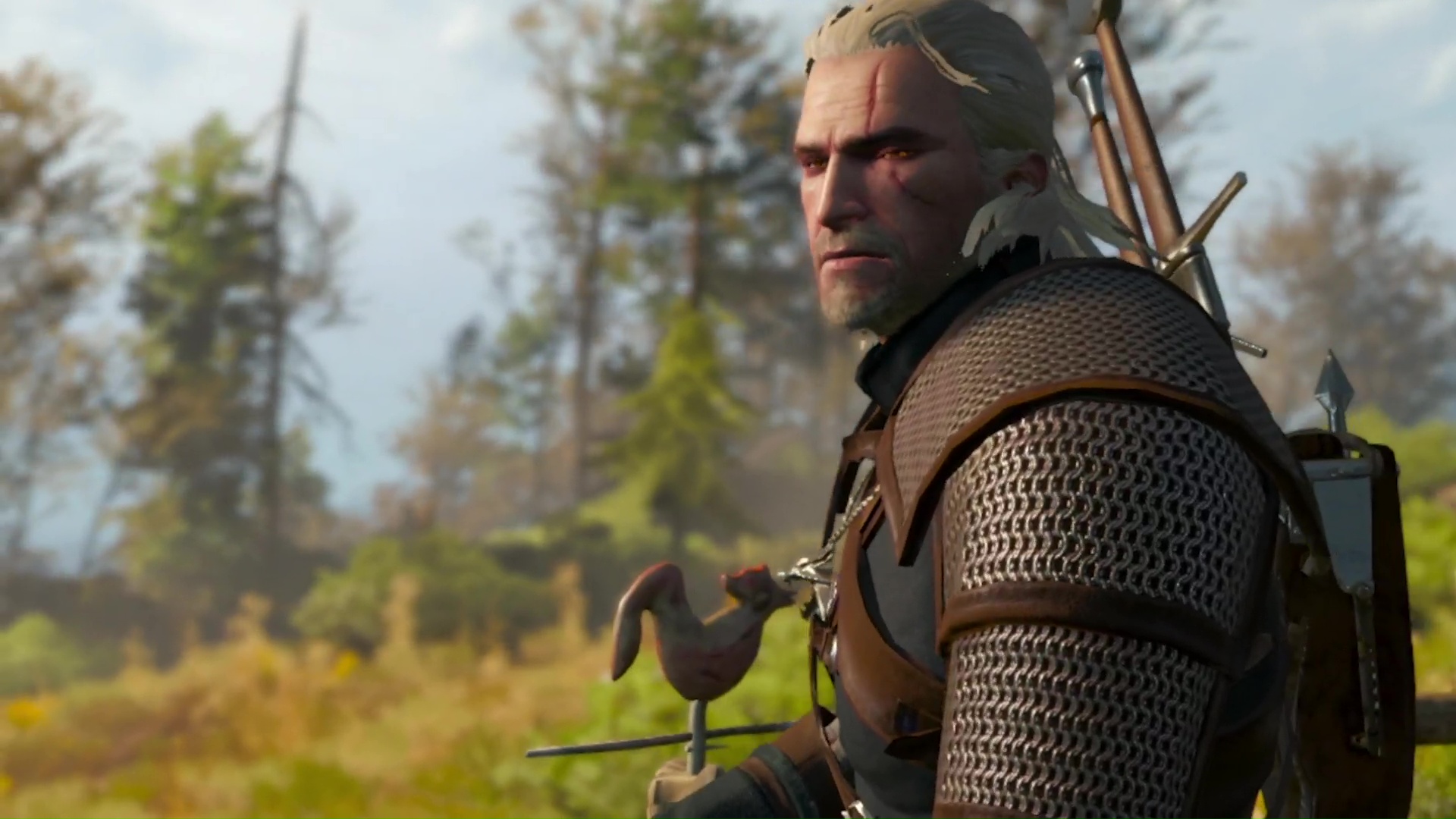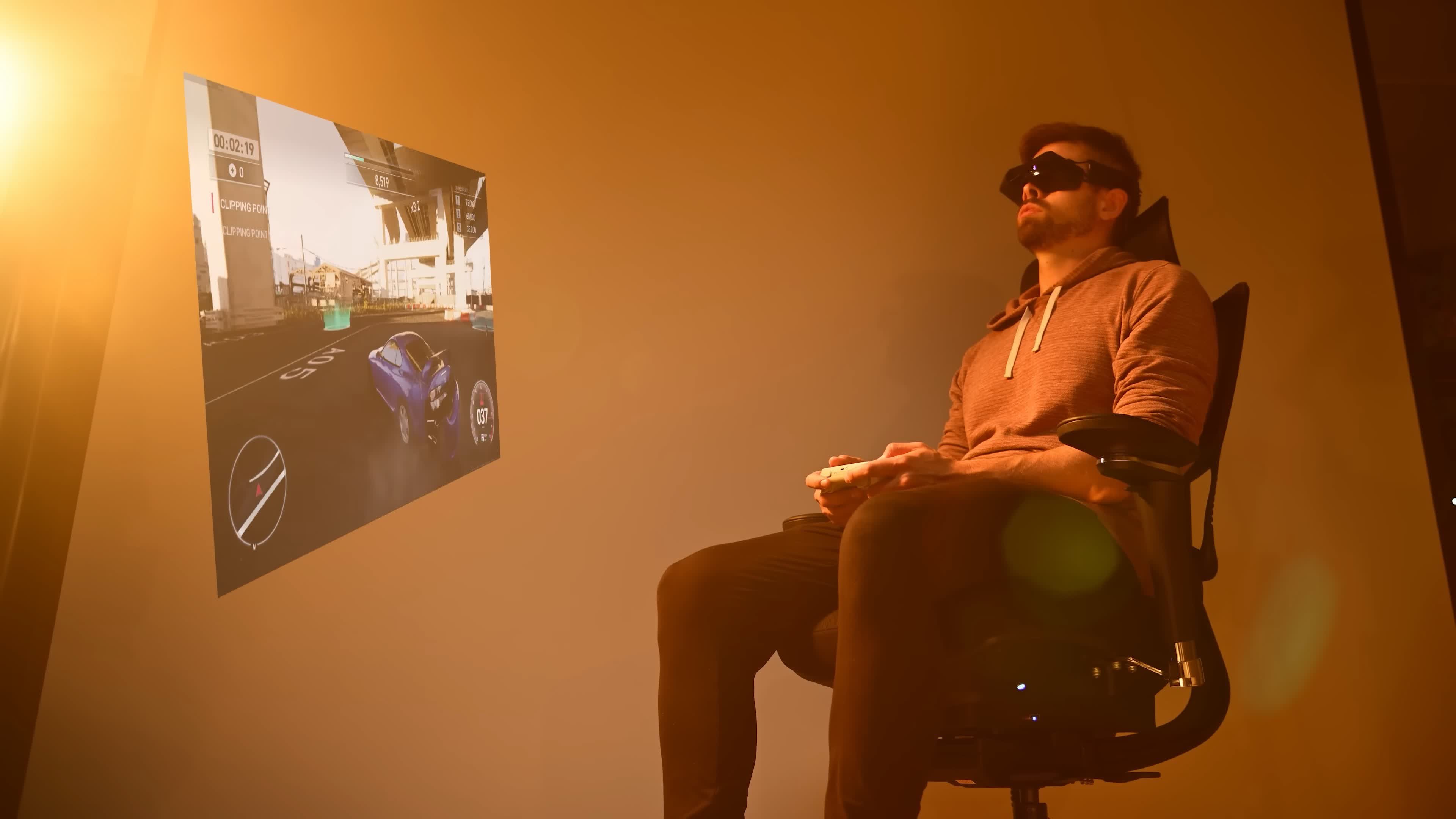Painkiller RTX is a path-traced upgrade to a classic but almost forgotten shooter
Nvidia's RTX Remix is a remarkable tool that allows game modders to bring state-of-the-art path traced visuals to classic PC games. We've seen Portal RTX from Nvidia already, along with the development of a full-on remaster of Half-Life 2 - but I was excited to see a community of modders take on 2004's Painkiller, enhanced now to become Painkiller RTX. It's still a work-in-progress project as of version 0.1.6, but what I've seen so far is still highly impressive - and if you have the means, I recommend checking it out.
The whole reason RTX Remix works with the original Painkiller is due to its custom rendering technology, known as the PainEngine. This 2004 release from People Can Fly Studios was built around Direct X 8.1, which gave it stellar visuals at the time, including bloom effects – specular lighting with limited bump mapping and full framebuffer distortion effects. Those visuals dazzled top-end GPU owners of the time, but like a great number of PC releases from that era, it had a DX7 fallback which culled the fancier shading effects and could even run on GPUs like the original GeForce.
RTX Remix uses the fixed function DX7 path and replaces the core rendering with the path tracer - and that is how I have been playing the game these last few days, taking in the sights and sounds of Painkiller with a new lick of paint. It's an upgrade that has made me appreciate it all the more now in 2025 as it is quite a special game that history has mostly forgotten.
To fully enjoy the modders' work on the path-traced upgrade to Painkiller, we highly recommend this video.Watch on YouTube
Painkiller is primarily a singleplayer first-person shooter that bucked the trends of the time period. After Half-Life and Halo: Combat Evolved, many first person shooters trended towards a more grounded and storytelling-based design. The classic FPS franchises like Quake or Unreal had gone on to become wholly focused on multiplayer, or else transitioned to the storytelling route - like Doom 3, for example. Painkiller took all of those 'modern' trappings and threw them in the garbage. A narrative only exists in a loose sense with pre-rendered video that bookends the game’s chapters, acting only as a flimsy excuse to send the player to visually distinct levels that have no thematic linking beyond pointing you towards enemies that you should dispatch with a variety of weapons.
The basic gameplay sounds familiar if you ever played Doom Eternal or Doom 2016. It is simple on paper, but thanks to the enemy and level variety and the brilliant weaponry, it does not get tiring. The game enhanced its traditional FPS gameplay with an extensive use of Havok physics – where a great deal of the game’s environmental objects could be broken up into tiny pieces with rigid body movement on all the little fragments, or environmental objects could be manipulated with ragdoll or rope physics. Sometimes it is there for purely visual entertainment but other times it has a gameplay purpose with destructible objects often containing valuable resources or being useful as a physics weapon against the game's enemies.
So, what's the score with Painkiller RTX? Well, the original's baked lighting featured hardly any moving lights and no real-time perspective-correct shadows - so all of that is added as part and parcel of the path-traced visuals. The RTX renderer also takes advantage of ray-traced fog volumes, showing shadows in the fog in the areas where light is obscured. Another aspect you might notice is that the game’s various pickups have been now made to be light-emissive. In the original game, emissives textures are used to keep things full bright even in darkness, but they themselves emit no light. Since the path tracer fully supports emissive lighting from any arbitrary surface, they all now cast light, making them stand out even more in the environment.
To see this content please enable targeting cookies.
The original game extensively used physics objects, which tended to lead to a clash in lighting and shading for any moving objects, which were incongruous then with the static baked lighting. Turn on the path tracer and these moving objects are grounded into the environment with shadows of their own, while receiving and casting light themselves. Boss battles are transformed as those enemies are also fully grounded in the surrounding environments, perfectly integrated into the path-traced visuals - and even if the titanic enemies are off-screen, their shadows are not.
The main difference in many scenes is just down to the new lighting - it's more physicalised now as dynamic objects are properly integrated, no longer floating or glowing strangely. One reason for this is due to lighting resolution. The original lighting was limited by trying to fit in 256MB of VRAM, competing for space with the game’s high resolution textures. Painkiller RTX's lighting and shadowing is achieved at a per-pixel level in the path tracer, which by necessity means that you tend to see more nuance, along with more bounce lighting as it is no longer erased away by bilinear filtering on chunky light map textures.
Alongside more dynamism and detail, there are a few new effects too. Lit fog is heavily used now in many levels - perhaps at its best in the asylum level where the moonlight and rain are now illuminated, giving the level more ambience than it had before. There is also some occasional usage of glass lighting effects like the stain glass windows in the game now filtering light through them properly, colouring the light on the ground in the pattern of the individual mosaic patterns found on their surface.
Half-Life 2 RTX - built on RTX Remix - recently received a demo release. It's the flagship project for the technology, but modders have delivered path traced versions of many modern games.Watch on YouTube
New textures and materials interact with the path tracer in ways that transform the game. For some objects, I believe the modders used Quixel megascan assets to give the materials parallax along with a high resolution that is artistically similar to the original game. A stoney ground in the graveyard now actually looks stoney, thanks to a different texture: a rocky material with craggy bits and crevices that obscure light and cast micro shadows, for example. Ceramic tiles on the floor now show varying levels of depth and cracks that pick up a very dull level of reflectivity from the moon-lit sky.
Some textures are also updated by running them through generative tools which interpret dark areas of the baked textures as recesses and lighter areas as raised edges and assigns them a heightmap. This automated process works quite well for textures whose baked features are easily interpreted, but for textures that had a lot of noise added into them to simulate detail, the automated process can be less successful.
That is the main issue I would say with the RTX version so far: some of these automated textures have a few too many bumps in them, making them appear unnatural. But that is just the heightmap data as the added in material values to give the textures sheen tend to look universally impressive. The original game barely has any reflectivity, and now a number of select surfaces show reflections in full effect, like the marble floors at the end of the game's second level. For the most part though, the remix of textures from this mod is subtle, with many textures still being as diffuse as found in the original game: rocky and dirty areas in particular look much the same as before, just with more accurately rendered shadows and bounce lighting - but without the plasticy sheen you might typically find in a seventh generation game.
Whether maxed on an RTX 5090 or running on optimised settings on an RTX 4060, the current work-in-progress version of Painkiller RTX can certainly challenge hardware. | Image credit: Digital Foundry
Make no mistake though: path tracing doesn't come cheap and to play this game at decent frame-rates, you either need to invest in high performance hardware or else accept some compromises to settings. Being a user mod that's still in development, I imagine this could improve in later versions but at the moment, Painkiller RTX maxed out is very heavy - even heavier than Portal RTX. So if you want to play it on a lower-end GPU, I recommend my optimised settings for Portal RTX, which basically amounts to turning down the amount of possible light bounces to save on performance and skimping a bit in other areas.
Even with that, an RTX 4060 was really struggling to run the game well. With frame generation on and DLSS set to 1080p balanced with the transformer model, 80fps to 90fps was the best I could achieve in the general combat zones, with the heaviest stages dipping into the 70s - and even into the 60s with frame generation.
The mod is still work-in-progress, but even now, Painkiller RTX is still a lot of fun and it can look stunning if your hardware is up to it. But even if you can't run it, I do hope this piece and its accompanying video pique your interest in checking out Painkiller in some form. Even without the path-traced upgrade, this is a classic first-person shooter that's often overlooked and more than holds its own against some of the period's better known games.
#painkiller #rtx #pathtraced #upgrade #classicPainkiller RTX is a path-traced upgrade to a classic but almost forgotten shooter
Nvidia's RTX Remix is a remarkable tool that allows game modders to bring state-of-the-art path traced visuals to classic PC games. We've seen Portal RTX from Nvidia already, along with the development of a full-on remaster of Half-Life 2 - but I was excited to see a community of modders take on 2004's Painkiller, enhanced now to become Painkiller RTX. It's still a work-in-progress project as of version 0.1.6, but what I've seen so far is still highly impressive - and if you have the means, I recommend checking it out.
The whole reason RTX Remix works with the original Painkiller is due to its custom rendering technology, known as the PainEngine. This 2004 release from People Can Fly Studios was built around Direct X 8.1, which gave it stellar visuals at the time, including bloom effects – specular lighting with limited bump mapping and full framebuffer distortion effects. Those visuals dazzled top-end GPU owners of the time, but like a great number of PC releases from that era, it had a DX7 fallback which culled the fancier shading effects and could even run on GPUs like the original GeForce.
RTX Remix uses the fixed function DX7 path and replaces the core rendering with the path tracer - and that is how I have been playing the game these last few days, taking in the sights and sounds of Painkiller with a new lick of paint. It's an upgrade that has made me appreciate it all the more now in 2025 as it is quite a special game that history has mostly forgotten.
To fully enjoy the modders' work on the path-traced upgrade to Painkiller, we highly recommend this video.Watch on YouTube
Painkiller is primarily a singleplayer first-person shooter that bucked the trends of the time period. After Half-Life and Halo: Combat Evolved, many first person shooters trended towards a more grounded and storytelling-based design. The classic FPS franchises like Quake or Unreal had gone on to become wholly focused on multiplayer, or else transitioned to the storytelling route - like Doom 3, for example. Painkiller took all of those 'modern' trappings and threw them in the garbage. A narrative only exists in a loose sense with pre-rendered video that bookends the game’s chapters, acting only as a flimsy excuse to send the player to visually distinct levels that have no thematic linking beyond pointing you towards enemies that you should dispatch with a variety of weapons.
The basic gameplay sounds familiar if you ever played Doom Eternal or Doom 2016. It is simple on paper, but thanks to the enemy and level variety and the brilliant weaponry, it does not get tiring. The game enhanced its traditional FPS gameplay with an extensive use of Havok physics – where a great deal of the game’s environmental objects could be broken up into tiny pieces with rigid body movement on all the little fragments, or environmental objects could be manipulated with ragdoll or rope physics. Sometimes it is there for purely visual entertainment but other times it has a gameplay purpose with destructible objects often containing valuable resources or being useful as a physics weapon against the game's enemies.
So, what's the score with Painkiller RTX? Well, the original's baked lighting featured hardly any moving lights and no real-time perspective-correct shadows - so all of that is added as part and parcel of the path-traced visuals. The RTX renderer also takes advantage of ray-traced fog volumes, showing shadows in the fog in the areas where light is obscured. Another aspect you might notice is that the game’s various pickups have been now made to be light-emissive. In the original game, emissives textures are used to keep things full bright even in darkness, but they themselves emit no light. Since the path tracer fully supports emissive lighting from any arbitrary surface, they all now cast light, making them stand out even more in the environment.
To see this content please enable targeting cookies.
The original game extensively used physics objects, which tended to lead to a clash in lighting and shading for any moving objects, which were incongruous then with the static baked lighting. Turn on the path tracer and these moving objects are grounded into the environment with shadows of their own, while receiving and casting light themselves. Boss battles are transformed as those enemies are also fully grounded in the surrounding environments, perfectly integrated into the path-traced visuals - and even if the titanic enemies are off-screen, their shadows are not.
The main difference in many scenes is just down to the new lighting - it's more physicalised now as dynamic objects are properly integrated, no longer floating or glowing strangely. One reason for this is due to lighting resolution. The original lighting was limited by trying to fit in 256MB of VRAM, competing for space with the game’s high resolution textures. Painkiller RTX's lighting and shadowing is achieved at a per-pixel level in the path tracer, which by necessity means that you tend to see more nuance, along with more bounce lighting as it is no longer erased away by bilinear filtering on chunky light map textures.
Alongside more dynamism and detail, there are a few new effects too. Lit fog is heavily used now in many levels - perhaps at its best in the asylum level where the moonlight and rain are now illuminated, giving the level more ambience than it had before. There is also some occasional usage of glass lighting effects like the stain glass windows in the game now filtering light through them properly, colouring the light on the ground in the pattern of the individual mosaic patterns found on their surface.
Half-Life 2 RTX - built on RTX Remix - recently received a demo release. It's the flagship project for the technology, but modders have delivered path traced versions of many modern games.Watch on YouTube
New textures and materials interact with the path tracer in ways that transform the game. For some objects, I believe the modders used Quixel megascan assets to give the materials parallax along with a high resolution that is artistically similar to the original game. A stoney ground in the graveyard now actually looks stoney, thanks to a different texture: a rocky material with craggy bits and crevices that obscure light and cast micro shadows, for example. Ceramic tiles on the floor now show varying levels of depth and cracks that pick up a very dull level of reflectivity from the moon-lit sky.
Some textures are also updated by running them through generative tools which interpret dark areas of the baked textures as recesses and lighter areas as raised edges and assigns them a heightmap. This automated process works quite well for textures whose baked features are easily interpreted, but for textures that had a lot of noise added into them to simulate detail, the automated process can be less successful.
That is the main issue I would say with the RTX version so far: some of these automated textures have a few too many bumps in them, making them appear unnatural. But that is just the heightmap data as the added in material values to give the textures sheen tend to look universally impressive. The original game barely has any reflectivity, and now a number of select surfaces show reflections in full effect, like the marble floors at the end of the game's second level. For the most part though, the remix of textures from this mod is subtle, with many textures still being as diffuse as found in the original game: rocky and dirty areas in particular look much the same as before, just with more accurately rendered shadows and bounce lighting - but without the plasticy sheen you might typically find in a seventh generation game.
Whether maxed on an RTX 5090 or running on optimised settings on an RTX 4060, the current work-in-progress version of Painkiller RTX can certainly challenge hardware. | Image credit: Digital Foundry
Make no mistake though: path tracing doesn't come cheap and to play this game at decent frame-rates, you either need to invest in high performance hardware or else accept some compromises to settings. Being a user mod that's still in development, I imagine this could improve in later versions but at the moment, Painkiller RTX maxed out is very heavy - even heavier than Portal RTX. So if you want to play it on a lower-end GPU, I recommend my optimised settings for Portal RTX, which basically amounts to turning down the amount of possible light bounces to save on performance and skimping a bit in other areas.
Even with that, an RTX 4060 was really struggling to run the game well. With frame generation on and DLSS set to 1080p balanced with the transformer model, 80fps to 90fps was the best I could achieve in the general combat zones, with the heaviest stages dipping into the 70s - and even into the 60s with frame generation.
The mod is still work-in-progress, but even now, Painkiller RTX is still a lot of fun and it can look stunning if your hardware is up to it. But even if you can't run it, I do hope this piece and its accompanying video pique your interest in checking out Painkiller in some form. Even without the path-traced upgrade, this is a classic first-person shooter that's often overlooked and more than holds its own against some of the period's better known games.
#painkiller #rtx #pathtraced #upgrade #classic








